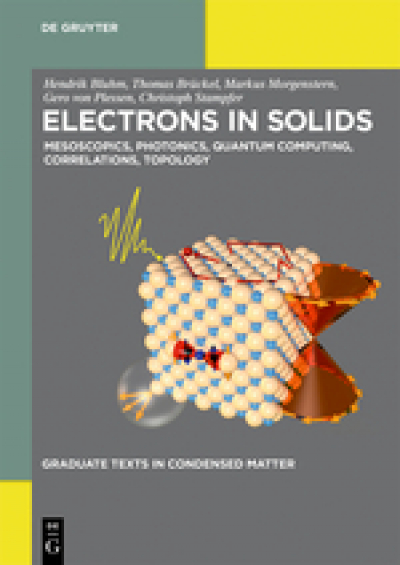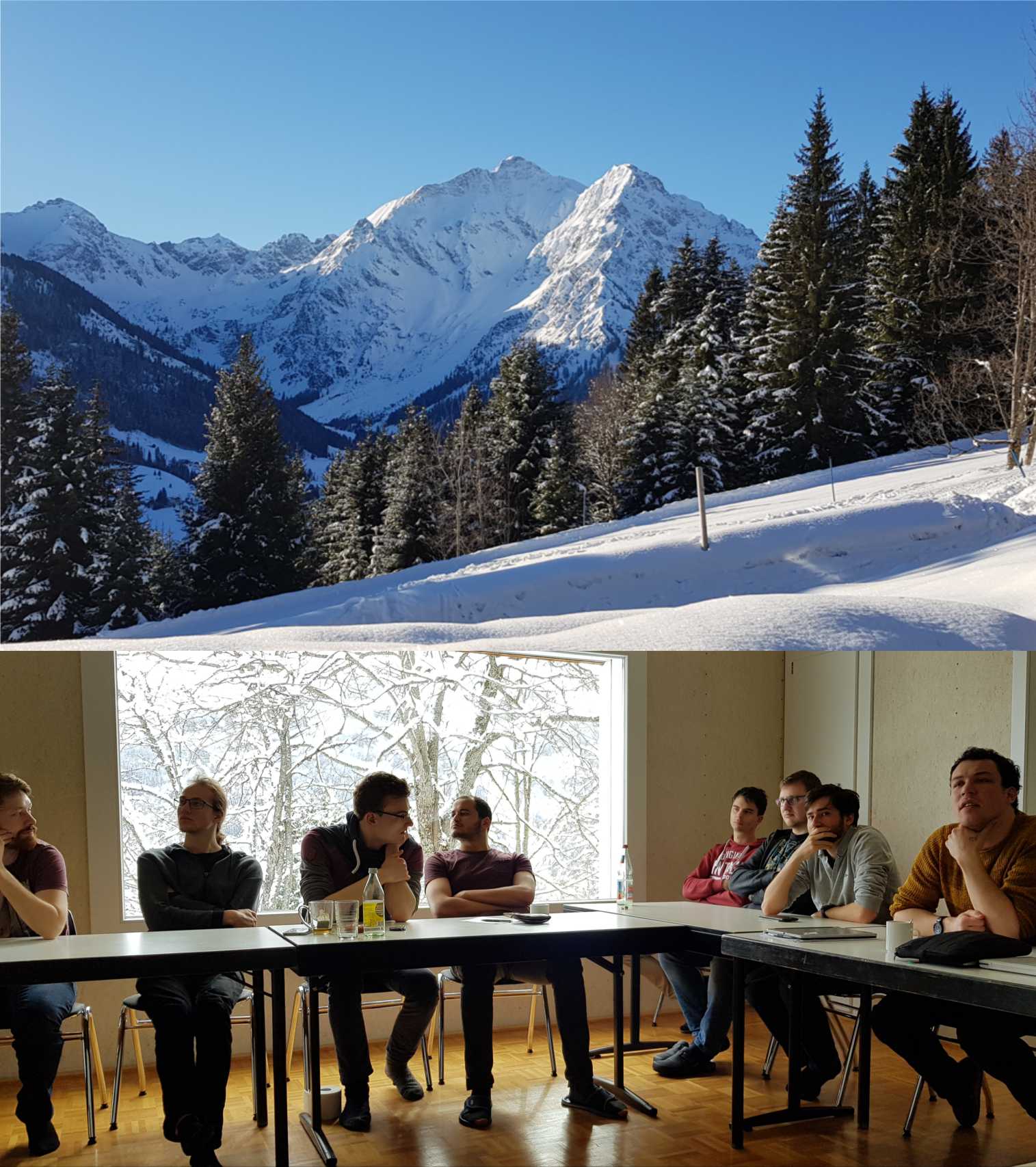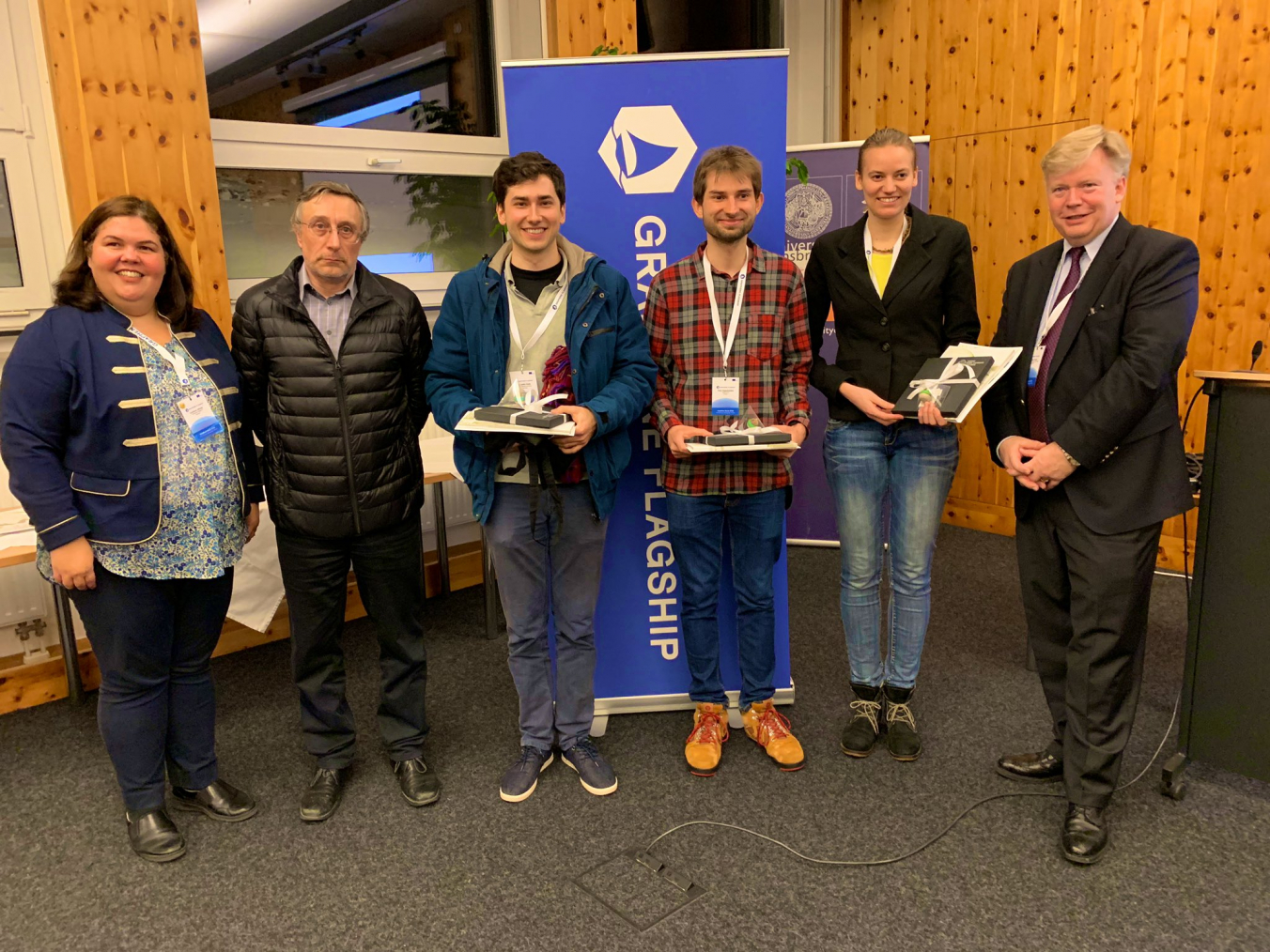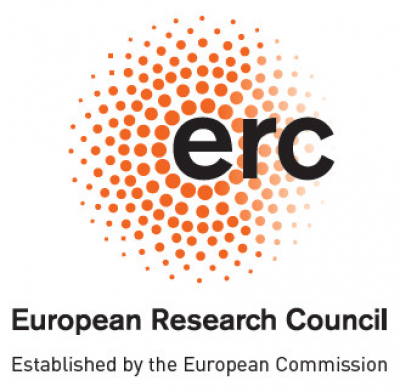Current events
Next talk on Tuesday in 3 days by Nikita Berg.
News 11.11.2025
New publication: Tailoring Phonon Polaritons in hBN with the Plasmonic Phase-Change Material In3SbTe2
Site Content:
04.04.2019
DFG to establish a new Priority Programme on 2D Materials
The German Research Foundation (DFG) is establishing 14 new Priority Programmes (SPP) for the year 2020. This was decided by the DFG Senate in Bonn. One of the 14 new programs, selected from 50 submitted initiatives, was set up with the contribution of Prof. Christoph Stampfer (a member of the Aachen Graphene & 2D Materials Center) and focuses on 2D materials. The new programon is entitled "2D Materials - Physics of van der Waals Heterostructures (2DMP)" and it is coordinated by Prof. Dr. Thomas Heine (TU Dresden).
Press release on the website of the DFG.

01.04.2019
New book: “Electrons in Solids”

Hendrik Bluhm, Thomas Brückel, Markus Morgenstern, Gero Plessen, Christoph Stampfer (2019).
Electrons in Solids: Mesoscopics, Photonics, Quantum Computing, Correlations, Topology (pp. I–IV). Berlin, Boston: De Gruyter.
https://doi.org/10.1515/9783110438321
As a continuation of classical condensed matter physics texts, this graduate
textbook on “Electrons in Solids” introduces advanced topics of correlated electron systems, mesoscopic
transport, low-dimensional electron systems, unconventional superconductivity
and topological insulators. These aspects are complemented by theoretical
aspects of quantum information theory as well as solid state implementations. The book
covers modern many body theory and effects arising from correlated electron
systems and closes a gap between basic condensed matter textbooks and the forefront of
research.

22.03.2019
Söllerhaus-Workshop 2019
The Söllerhaus-Workshop 2019 from the 15th to the 21st of March of the 2nd Institute of Physics A, B and C focusing on "2D Materials and Quantum Technologies" was great fun with many interesting talks and discussions and lots of good snow.


08.02.2019
Poster prize for Benedikt Frohn at the "Graphene Study 2019"
Benedikt Frohn won the 1st poster prize at the "Graphene Study 2018" in Obergurgl (Austria) with his poster on "Gate-defined electron-hole double dots in bilayer graphene". Congratulations! The 3rd poster prize went to Rebekka Garreis from the Ensslin group (ETH Zurich) with a very nice poster on charge detection in bilayer graphene quantum dots. Allowing one to conclude that soft-confinement in bilayer graphene is indeed highly promising.


25.01.2019
ERC Consolidator Grant for Christoph Stampfer

For the second time Christoph Stampfer has been awarded a prestigious ERC Grant. After an ERC Starting Grant on “Graphene Quantum Electromechanical Systems” in 2011, he now receives a Consolidator Grant to work with his team on “2D Materials for Quantum Technologies”. Press release on the website of RWTH Aachen University.

24.01.2019
JARA-FIT Annual Report 2017
The JARA-FIT Annual Report 2017 is now available and gives an overview about the different occurrences like events, honours and research results. The reports also contains a current list of JARA members and involved institutes. Research reports give a summery about the work an development of the section. The JARA-FIT Annual Report 2017 can be found here.

23.01.2019
ML4Q - Kick-Off
The ML4Q (Matter and Light for Quantum Computing) homepage is now online, see https://ml4q.de

